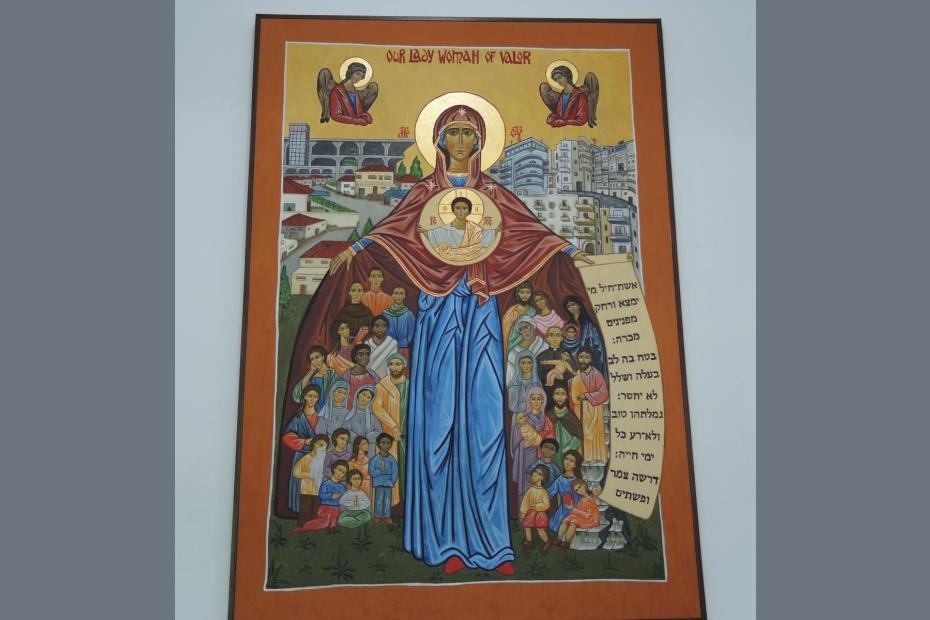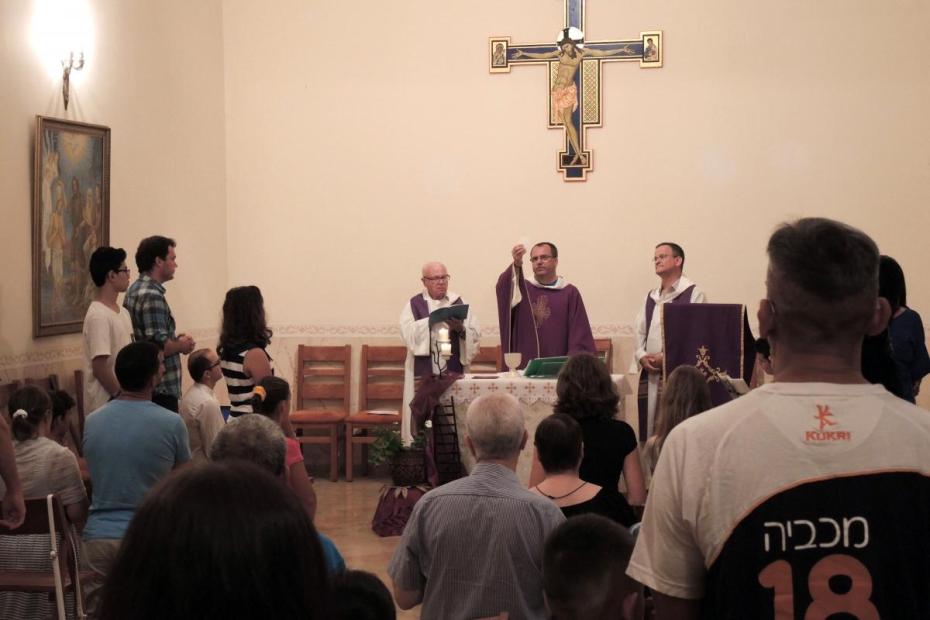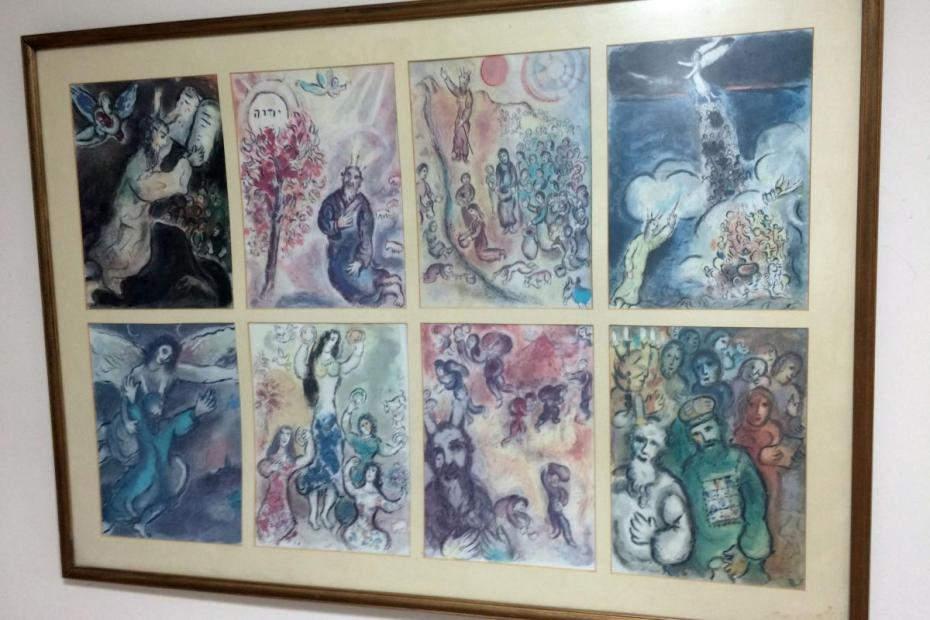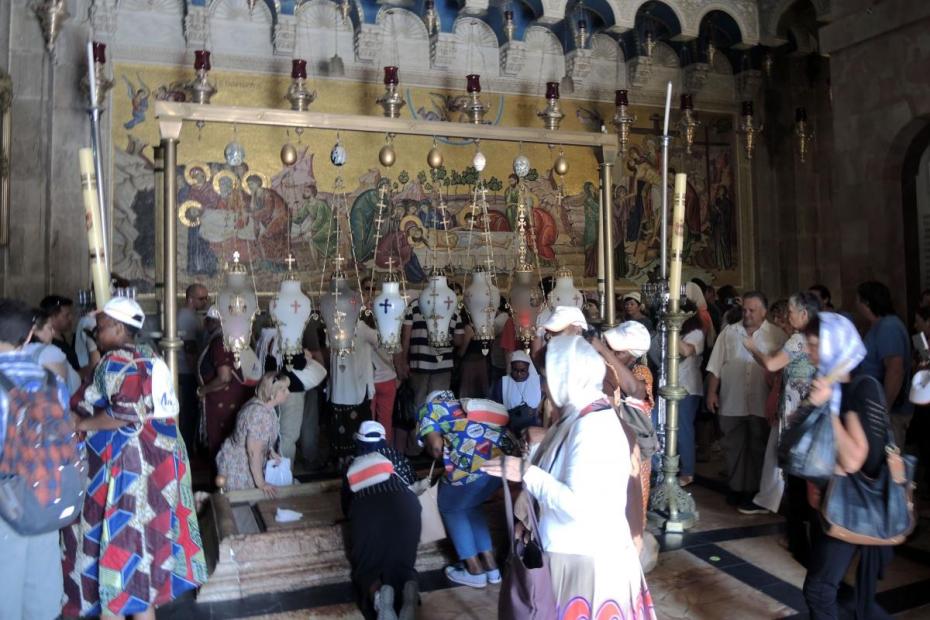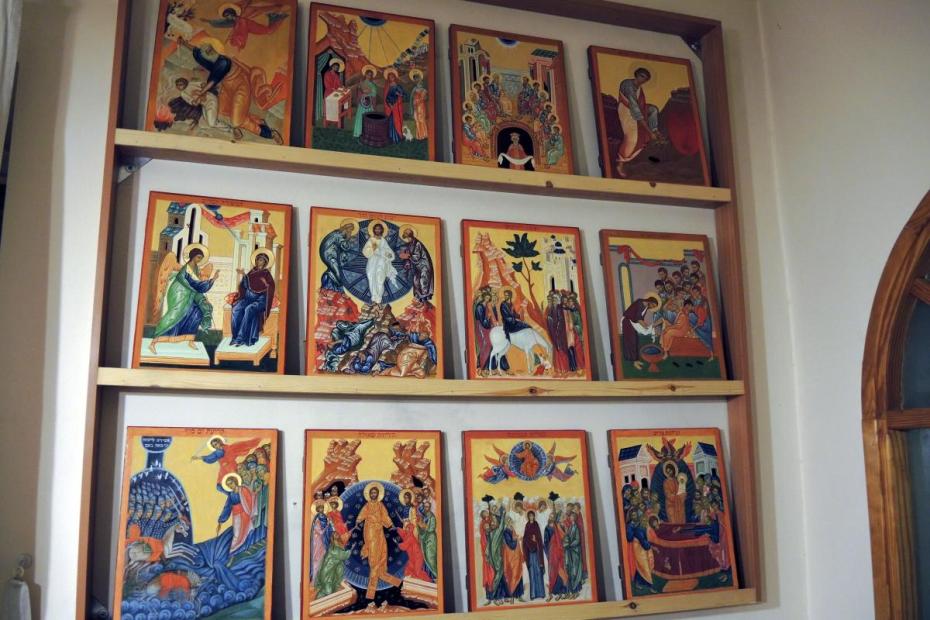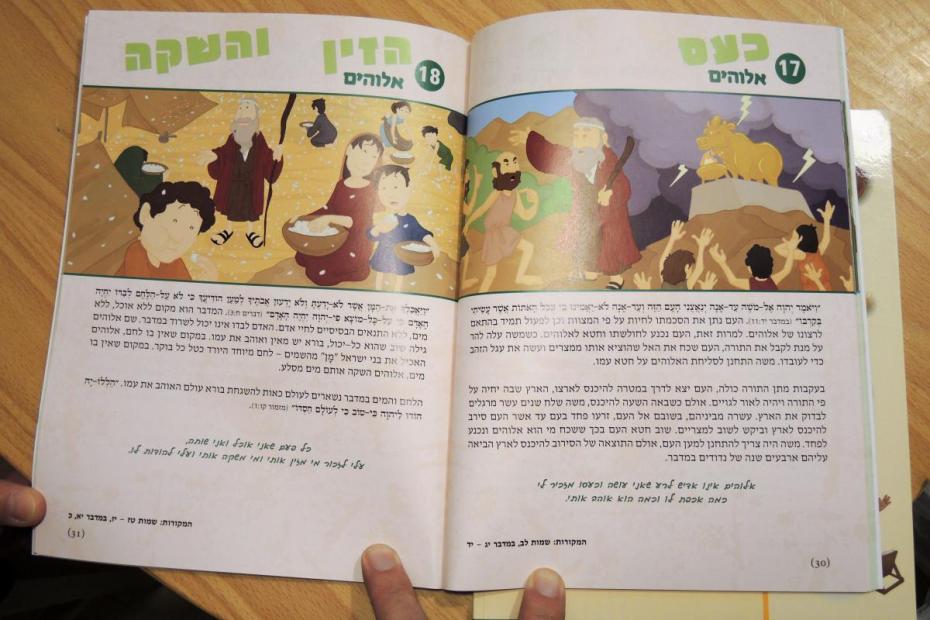Perhaps because of their presence in the Holy Land, where geography can help make the events and people of biblical times more immediate and accessible, or perhaps because of the Hebrew-speaking Catholic community’s efforts to focus on the Pentateuch and to connect to their Jewish roots, post-biblical Catholic saints seem not to occupy a particularly significant place in the religious imaginations of Hebrew-speaking Catholics.1
Members of the community encounter prayers for the saints at Mass on Catholic feast days and are exposed to blurbs about them in community publications, and most people could name some important saints.Still, no one interviewed suggested that saints were especially significant to them. Notably, most of the houses of the Hebrew-speaking Catholic community are named for biblical figures: St. Abraham, St. Simeon and St. Anne, St. Joseph, St. Mary, St. John the Baptist.2
Asked to whom he prays, one Russian-born community member said, “God first, then Jesus, then sometimes Mary,” but said that saints had little role as intercessors or even as major role models. One woman interviewee said that she grew up in a family that expressed strong Marian devotion but had come to believe as an adult member of the Hebrew-speaking community that such devotion distracted from a proper focus on Jesus and the Father and on both testaments of the Bible. She also came to believe that it is “a problem” to be very focused on the saints as intermediaries, when her prayer “should be about relationship with God.”
Mary had a more significant role in the community than the saints but was seldom spoken of in terms of sweetness or purity or humility. In Beer Sheba, for example, one woman said that she had developed a devotion to Mary under the influence of a Coptic Orthodox priest. She reflected what others said when she indicated that she understood Mary as a strong woman, who dealt with adversity, raised Jesus and guided him. That sense, perhaps shaped by Israeli cultural sensibilities, is reflected in the choice of a name for the migrant/refugee center, Our Lady Woman of Valor.
- 1Observations here are based on interviews with lay Catholics and clergy in Tel Aviv and Jaffa, Jerusalem and Beer Sheba in October 2015.
- 2The church in Jaffa, which long predates the Hebrew-speaking community, is named for St. Peter. The Filipino community chose to name one of its communities after one of their own, San Lorenzo Ruiz.
